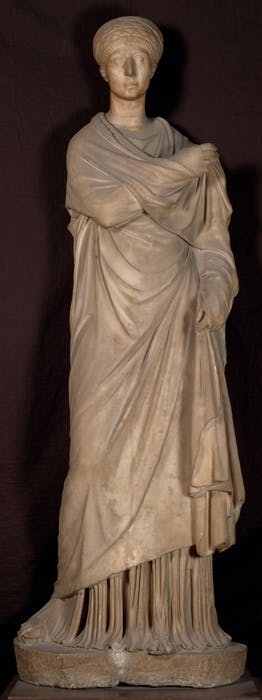"Piccola Ercolanese” type female statue
Roman art
The head, though ancient, does not pertain to the body, to which it is joined by a restoration neck. The nose, the fingers and the lower edge of the coat (himation) are also the result of integrations. The statue arrived in the Gallery in 1778 from the garden of the Villa di Pratolino, a vast residential complex owned by the Medici family to the north of Florence. The standing female figure, wrapped in himation and with her right leg bent and slightly backwards, corresponds to the type of the "Piccola Ercolanese", whose name derives from the fact that the first examples of this type of statuary were found in the eighteenth century, during excavations in the theatre of Herculaneum. It is believed that the model of inspiration of the statue should be sought in the works that came out of the workshops of Prassitelian inspiration operating at the end of the 4th century BC. The head of the young woman is instead datable to the Hadrianic age (117-138 AD) by virtue of her turban-like hairstyle. The replica of the prassitelic type can also be dated to the same period, in virtue of its formal characteristics inspired by the academic taste typical of the period.
A. Romualdi (ed.), Studies and Restorations. The ancient marbles of the Uffizi Gallery, II, Firenze, Polistampa, 2007 (with contributions by M. Giachi, C. Pacini, Statua femminile tipo "Piccola Ercolanese", pp. 122-129; L. Pierelli, G. Tonini, 130-133) and previous bibliography.
